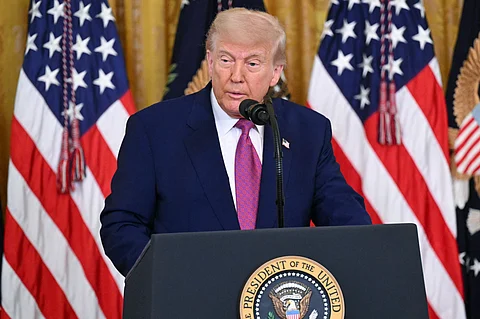

A sweeping new proposal in the United States (US) Senate could fundamentally change how students and families finance higher education.
Introduced as part of President Trump’s comprehensive “One Big Beautiful Bill Act,” the measure seeks to lower federal student loan limits and sharply reduce the number of repayment options available, as per a report by The Times of India.
Though the Senate version takes a more moderate approach than an earlier draft passed by the House, it still represents a significant tightening of federal student aid, especially for graduate students and parents, who could face stricter borrowing caps under the proposed rules.
Federal loan caps: Who’s affected?
At the core of the bill is a plan to impose stricter limits on the amount that can be borrowed through federal student loan programmes.
Undergraduates would continue to access both subsidised and unsubsidised loans, though with clearer caps. Graduate students and parents, however, would see their borrowing power reduced, particularly under the federal PLUS loan programme.
The Senate version, unlike the House proposal, keeps subsidised loans intact, which means the federal government would still cover interest while students are in school. However, the overall amount students can borrow would still be curtailed, especially for advanced degrees, according to the report by TOI.
This move could make financing graduate programmes, professional schools, or out-of-state education more difficult, forcing families to rethink how, and whether, they can afford certain colleges.
Could private loans fill the gap?
With lower federal loan ceilings, many families may turn to private lenders to make up the shortfall. But private loans don’t offer the same safety net. They typically:
Come with variable interest rates
Lack income-based repayment options
Offer fewer deferment or forgiveness provisions
Students without strong credit histories or co-signers may also struggle to qualify, leaving them with limited or riskier borrowing choices.
Repayment options reduced to two
Another major change: the bill would consolidate federal repayment plans, leaving just two options —a significant drop from the multiple income-driven repayment plans currently available, as reported by The Times of India.
This would eliminate popular options like the SAVE plan, PAYE, and others that help borrowers tailor payments to income. For many, this could mean:
Higher monthly payments
Longer payoff periods
Fewer protections in times of financial stress
What happens next?
Though the proposal is still making its way through Congress and may undergo changes, it signals a clear shift: tightening federal student aid and reducing long-term reliance on government loans.
While billed as a way to simplify and stabilise the student loan system, critics warn it may push more students into riskier private debt or out of higher education altogether.
Whether you're applying to college, planning for graduate school, or currently repaying loans, these proposed changes could significantly alter the financial landscape. Staying informed and financially prepared will be key as the bill moves forward.
